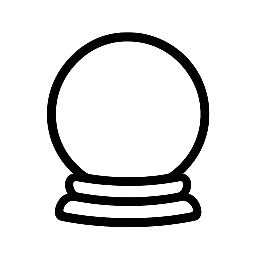The Hidden Code of Creation: Exploring the Mystical Meaning of Kabbalah
For centuries, the ancient Jewish mystical tradition of Kabbalah has been shrouded in mystery, its secrets and symbolism hidden from the uninitiated. Yet, for those who dare to delve into its depths, Kabbalah offers a profound understanding of the universe, the nature of God, and the human condition. At its core, Kabbalah is a code, a hidden language that holds the key to unlocking the mysteries of creation. In this article, we will explore the mystical meaning of Kabbalah and uncover the secrets that lie within.
The Origins of Kabbalah
Kabbalah, which translates to "receiving" or "tradition," has its roots in the Torah, the sacred text of Judaism. The earliest written records of Kabbalistic thought date back to the 1st century CE, with the writing of the Zohar, a foundational text of Kabbalah. However, the tradition itself is believed to have originated much earlier, with some scholars tracing its roots back to the time of the prophets.
The Tree of Life: A Symbol of Creation
At the heart of Kabbalah is the Tree of Life, a complex symbol that represents the interconnectedness of the universe. The Tree consists of ten sephirot, or spheres, which emanate from the infinite and divine source, known as Ein Sof. Each sephirah represents a different aspect of the divine, from the topmost Keter (crown) to the lowest Malkhut (kingdom). The Tree of Life is a map of the universe, illustrating the flow of divine energy and the relationships between the different aspects of creation.
The Mystical Meaning of the Sephirot
Each sephirah on the Tree of Life holds a specific meaning and significance. The top three sephirot, Keter, Chokhmah, and Binah, represent the divine intellect and the source of creation. The next six sephirot, Chesed, Gevurah, Tiferet, Netzach, Hod, and Yesod, represent the emotional and psychological aspects of the divine, while the final sephirah, Malkhut, represents the physical world.
The sephirot are also associated with different colors, sounds, and sacred names, which are used in meditation and ritual to connect with the divine energy. By understanding the relationships between the sephirot and their corresponding energies, practitioners of Kabbalah can gain insight into the workings of the universe and the human condition.
The Concept of Tzimtzum: The Contraction of God
One of the most fundamental concepts in Kabbalah is Tzimtzum, or the contraction of God. According to this idea, God, in infinite wisdom, contracted itself to create a space for the universe to exist. This contraction created a void, a place where creation could emerge and take shape. The concept of Tzimtzum is central to understanding the nature of creation and the relationship between the divine and the physical world.
The Role of the Human in Kabbalah
In Kabbalah, the human being is seen as a microcosm of the universe, a reflection of the divine plan. The human soul is composed of five levels, corresponding to the five worlds of creation, and is capable of ascending and descending the Tree of Life. Through meditation, prayer, and ritual, the practitioner of Kabbalah seeks to connect with the divine energy and to align themselves with the will of the Creator.
The Path to Enlightenment
The path to enlightenment in Kabbalah is a lifelong journey, one that requires dedication, discipline, and self-reflection. Practitioners of Kabbalah use a range of techniques, including meditation, visualization, and sacred study, to connect with the divine energy and to gain insight into the mysteries of the universe.
In conclusion, Kabbalah is a rich and complex tradition that offers a profound understanding of the universe and the human condition. Through its mystical symbolism and sacred texts, Kabbalah reveals the hidden code of creation, a code that holds the key to unlocking the secrets of the universe. For those who are willing to embark on this journey, Kabbalah promises a path to enlightenment, a path that leads to a deeper understanding of the divine and our place within the grand tapestry of creation.
**Recommended Reading


Leave a Reply